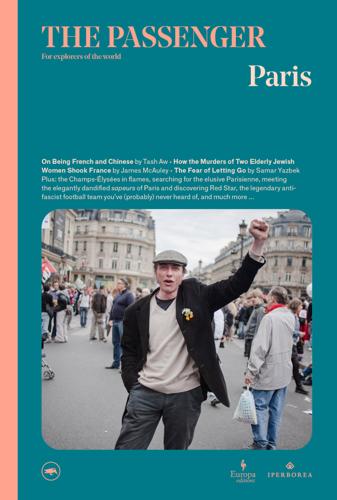
The Passenger: Paris
by
AA.VV.
Published 26 Jun 2021
Hidalgo was clear about her aim to make money here, and MasterCard became sponsors of Paris’s Gay Pride, allowing people to make card payments from the floats. ANNE HIDALGO The campaign for the 2020 municipal election in Paris was an unusual one, with the mayoral race contested by two women with different ideas but united by an unspoken and (in the world of politics) uncharacteristic mutual respect. Neither comes from the grande bourgeoisie or attended the country’s top universities: Rachida Dati’s father was a builder, and Anne Hidalgo, who was re-elected mayor, is the daughter of an electrician. The Franco-Spanish mayor is now an old hand at the Hôtel de Ville, where she has been in office since 2001, first as deputy mayor then in the top job.
…
‘Macron démission’ (‘Macron resign’) is the phrase binding the movement together. ‘Wake up, it’s time for outrage!’ one placard reads. Barricades are erected to the thrumming of motorbike engines. The scenic avenue has become a field of battle. A week passes, and the gilets jaunes are back on the Champs. The Twitter account of the mayor of Paris, Anne Hidalgo, seems oblivious to the situation, suggesting that people ‘come and admire the fantastic Christmas lights on the Champs-Élysées’. Botched communications, her adviser Matthieu Lamarre quickly acknowledges. Everything is subverted and put to a different use, including a line from the Joe Dassin song ‘Les Champs-Élysées’, which goes, ‘Je m’baladais sur l’avenue, le cœur ouvert à l’inconnu …’ (‘I was walking down the avenue, my heart open to all things new …’) which is reworked as ‘J’manifestais sur l’avenue, mais mon gilet leur a pas plu …’ (‘I was protesting on the avenue, but my vest caused a real to-do …’).
…
During the months of lockdown back in Italy I spent a lot of time contemplating my years in Paris, and as soon as the restaurants reopened I decided to go back and work the summer season in the kitchen of the old place on the hill behind Père Lachaise Cemetery. Just before her re-election, the mayor of Paris, Anne Hidalgo, approved an exceptional measure to sustain the city’s bar-and-restaurant sector at least for the summer. Getting authorisation for outdoor seating in Paris, as elsewhere, used to be a black hole of bureaucracy. The mayor, with this significant announcement, liberalised the use of public space until the end of September: all you had to do was apply on the website and get the form stamped to be able to use pretty much all the room you wanted, including parking spaces.
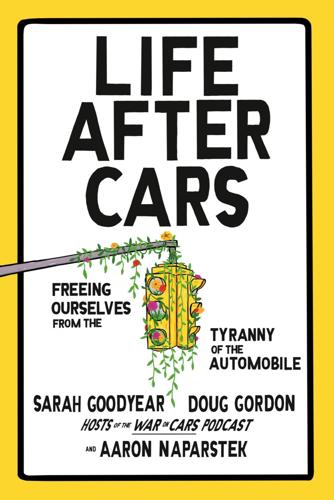
Life After Cars: Freeing Ourselves From the Tyranny of the Automobile
by
Sarah Goodyear
,
Doug Gordon
and
Aaron Naparstek
Published 21 Oct 2025
GO TO NOTE REFERENCE IN TEXT It’s true that the mayor’s approval ratings: Marie Pouzadoux, “Anne Hidalgo Obtains the Worst Presidential Election Result in the History of the Parti Socialiste,” Le Monde, April 11, 2022, lemonde.fr/en/2022-presidential-election/article/2022/04/11/anne-hidalgo-obtains-the-worst-presidential-election-result-in-the-history-of-the-parti-socialiste-ps_5980262_16.html. GO TO NOTE REFERENCE IN TEXT “They are philistines”: Clea Caulcutt, “Anne Hidalgo’s Sack of Paris,” Politico Europe, December 15, 2021, politico.eu/article/anne-hidalgo-paris-mayor-urban-revolution. GO TO NOTE REFERENCE IN TEXT Hidalgo’s deputy Najdovski: Goodyear, “The French Connection.”
…
To paraphrase a popular saying, when you’re accustomed to driving, sharing the road feels like oppression. Today, any effort to reclaim streets for people is met with claims of a war on cars. “Paris Mayor’s War on Cars Moves Up a Gear with Ban in the Heart of the City” was how France 24 described Mayor Anne Hidalgo’s efforts to limit cars on the Rue de Rivoli and otherwise make the city friendlier for cycling in 2017. The New York Post published a 2019 story about transformation of curbside car storage into Citi Bike stations, loading zones, public seating, and bike lanes under the headline “NYC’s War on Cars Has Eliminated 6,100 Parking Spots in Two Years.”
…
Booker was just one of thousands upon thousands of people in town for the Olympics who took advantage of the city’s abundant bike-share offerings, which had been beefed up in advance of the games. And like those other visitors to the City of Light, Booker got to experience firsthand what has become one of the easiest and most convenient ways to get around Paris: on two wheels. Under the leadership of Mayor Anne Hidalgo, a member of the Socialist Party who took office in 2014, this city of 2.16 million has created hundreds of kilometers of new bike lanes and huge new car-free green spaces along the River Seine, with a strong emphasis on improving public health and quality of life. A recent study found that in central Paris, where the changes have focused, 11.2 percent of trips are now made by bike, up from just 3 percent in 2010, and the proportion of people using cars and using bikes has flipped.

The Nation City: Why Mayors Are Now Running the World
by
Rahm Emanuel
Published 25 Feb 2020
They are progressive, smart, dynamic, inclusive, climate-aware, healthy, innovative, and diverse, among other things. Trump has taken his dislike of cities to another level, too, holding what seems like a personal antipathy for the mayors of some of the largest cities in the world. A few of his favorite targets: Sadiq Khan in London, Anne Hidalgo in Paris, Jim Kenney in Philadelphia, and me. And the list goes on. As it turns out, we haven’t been too keen on him, either. Chicago, like other cities in the U.S., is a gateway to the American Dream, and it is open to anyone who desires to pursue that dream. We are not open, however, to those who stand in the way of that pursuit.
…
So we decided that we needed to do something decisive to counter Trump’s disastrous decision. We hit on the idea of a climate change meeting of mayors to be held in North America, one in which we would agree on a new course of action. I offered to host the meeting in Chicago. And so, months later, fifty mayors—including, among others, Anne Hidalgo of Paris, Denis Coderre of Montreal, Miguel Ángel Mancera of Mexico City, myself, and close to forty other North American mayors—met in Chicago and signed a climate document that bound each of our cities to uphold the Paris Agreement. The Chicago Climate Charter, as it came to be known, was not just some fluffy photo opportunity (by the way, I’m not averse to those).
…
“Food is part of our heritage and now we are using that heritage in a new way,” he says. “This is the type of innovation, the blending of the old and the new, that we can do in our cities.” * * * “In a globalized world, protectionist reflexes can only separate us and spread fear,” says Anne Hidalgo, the decidedly outward-facing mayor of Paris. Under her leadership, the birthplace of the Age of Enlightenment has remained true to its heritage, with innovative ideas and programs involving immigration, climate change, and the new economy. Hidalgo became the city’s first female mayor after serving for thirteen years as the deputy mayor.
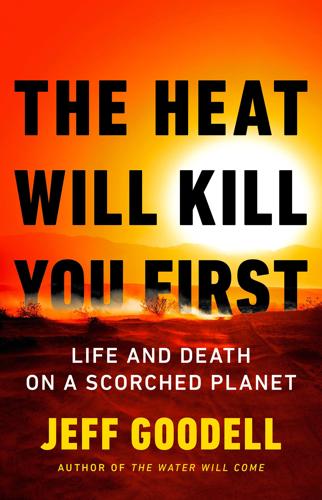
The Heat Will Kill You First: Life and Death on a Scorched Planet
by
Jeff Goodell
Published 10 Jul 2023
Curbed, October 25, 2018. https://archive.curbed.com/2016/9/27/13080078/paris-bans-cars-seine-right-bank-air-pollution-mayor-anne-hidalgo 250 miles of bike lanes: Madeline Schwartz. “Bike Lane to the Élysée” New York Review, March 24, 2022. https://www.nybooks.com/articles/2022/03/24/bike-lane-to-the-elysee-une-femme-francaise-hidalgo/ “My job is to transform”: Kim Willsher. “Anne Hidalgo: ‘Being Paris Mayor Is Like Piloting a Catamaran in a Gale.’” The Guardian, March 3, 2020. https://www.theguardian.com/world/2020/mar/03/anne-hidalgo-paris-mayor-second-term-interview only 9 percent: Treepedia website. Accessed October 2022. 108.7 degrees: Anthony Cuthbertson.
…
“There is consensus that we have to do something to change these buildings to make them safer and more habitable in the future, but there is no incentive to find a solution,” said Lirzin. “There is too deep of an idea that Paris is Paris and it can’t change.” The cooling of Paris began in 2014, with the election of Anne Hidalgo as the mayor. Hidalgo, sixty-three, is the daughter of Spanish refugees who fled fascism. Her grandfather, a left-wing activist from Andalucía, was sentenced to death under the Spanish dictator Francisco Franco (he was ultimately spared). Hidalgo, who became a naturalized French citizen at the age of fourteen, started out as a factory inspector before becoming a government advisor under Prime Minister Lionel Jospin in the 1990s.
…
Architectural Digest, January 29, 2021. https://www.architecturaldigest.com/story/pariss-champs-elysees-getting-major-makeover-what-does-that-mean-locals “an extraordinary garden”: Kim Willsher. “Paris Agrees to Turn Champs-Élysées into ‘Extraordinary Garden.’” The Guardian, January 10, 2021. https://www.theguardian.com/world/2021/jan/10/paris-approves-plan-to-turn-champs-elysees-into-extraordinary-garden-anne-hidalgo Lacaton & Vassal: Tom Ravenscroft. “Anne Lacaton and Jean-Philippe Vassal Win Pritzker Architecture Prize 2021.” Dazeen, March 16, 2021. https://www.dezeen.com/2021/03/16/anne-lacaton-jean-philippe-vassal-pritzker-architecture-prize-2021/ expand the Métro line: Shefali Anand. “With Grand Paris Express, Paris Hopes to Expand Its Borders—And Metropolitan Might.”
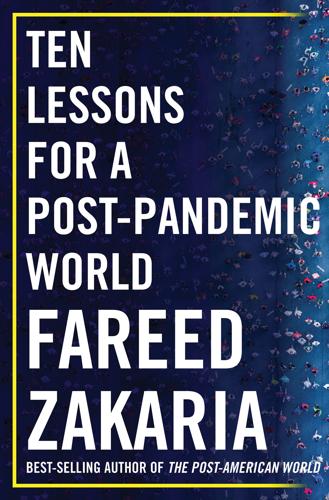
Ten Lessons for a Post-Pandemic World
by
Fareed Zakaria
Published 5 Oct 2020
Cities’ Growth Was Stagnating,” Brookings, April 6, 2020, https://www.brookings.edu/research/even-before-coronavirus-census-shows-u-s-cities-growth-was-stagnating/. 138 headed for . . . other metros:: Joel Kotkin, “What the Census Numbers Tell Us,“ April 5, 2018, http://joelkotkin.com/what-the-census-numbers-tell-us/. 138 fifteen-minute city: Natalie Whittle, “Welcome to the 15-Minute City,” Financial Times, July 17, 2020, https://www.ft.com/content/c1a53744-90d5-4560-9e3f-17ce06aba69a; Jennifer Keesmaat, “The Pandemic Does Not Spell the End for Cities,” Foreign Affairs, May 28, 2020. 138 Samuel Kling: “What Is Paris Mayor Anne Hidalgo’s Plan for a ‘15-Minute City’?,” Chicago Council on Global Affairs, February 24, 2020, https://youtu.be/55VkdnzGzhw. 139 YIMBY: Alana Semeuls, “From ‘Not in My Backyard’ to ‘Yes in My Backyard,’ ” Atlantic, July 5, 2017. 139 resoundingly reelected: “Hidalgo, Mayor since 2014, beat conservative candidate Rachida Dati in France’s municipal elections, winning 50.2% of the ballot compared to Dati’s 32%. Agnes Buzyn trailed in with just 16%”: Carlton Reid, “Anne Hidalgo Reelected as Mayor of Paris Vowing to Remove Cars and Boost Bicycling and Walking,” Forbes, June 28, 2020. 139 remain car-free: Feargus O’Sullivan, “What Happens to Public Space When Everything Moves Outside,” City Lab, May 29, 2020, https://www.bloomberg.com/news/features/2020–06–29/what-happens-to-public-space-when-everything-moves-outside. 140 “United City-States of America”: Parag Khanna, “A New Map for America,” April 15, 2016, citing Joel Kotkin’s “mega-regions.”
…
What’s clear is that established cities are increasingly vying with one another to keep residents. THE NEW METROPOLITAN MODEL What will the city of the future look like? It could be reimagined one more time. Paris is the place to watch in this regard. In January 2020, before the full force of the coming pandemic was known, Mayor Anne Hidalgo proposed a bold new plan that could gain momentum in the post-pandemic world. As part of her reelection campaign, she announced the goal of turning Paris into a “ville du quart d’heure”—a fifteen-minute city. The idea is to make almost everywhere one might need to go in a typical day accessible by a short walk or bike ride.
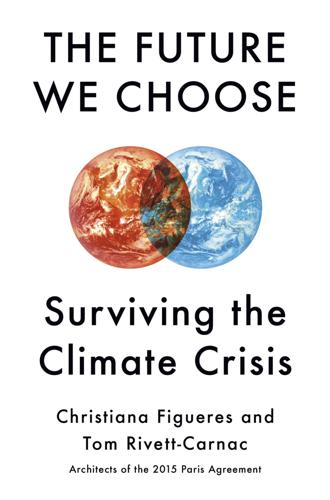
The Future We Choose: Surviving the Climate Crisis
by
Christiana Figueres
and
Tom Rivett-Carnac
Published 25 Feb 2020
This list is vast, and it would be impossible for us to mention everyone here, but we would like to pay special mention to Alejandro Agag, Lorena Aguilar, Fahad Al Attiya, Ken Alex, Ali Al-Naimi, Carlos Alvarado Quesada, Christiane Amanpour, Chris Anderson, Mats Andersson, Monica Araya, John Ashford, David Attenborough, AURORA, Mariana Awad, Peter Bakker, Vivian Balakrishnan, Ajay Banga, Greg Barker, Ecumenical Patriarch Bartholomew, Nicolette Bartlett, Oliver Bäte, Kevin Baumert, Marc Benioff, Jeff Bezos, Dean Bialek, Sue Biniaz, Fatih Birol, Michael Bloomberg, May Boeve, Gail Bradbrook, Piers Bradford, Richard Branson, Jesper Brodin, Tom Brookes, Jerry Brown, Sharan Burrow, Felipe Calderon, Kathy Calvin, Mark Campanale, Miguel Arias Cañete, Mark Carney, Clay Carnill, Andrea Correa do Lago, Anne-Sophie Cerisola, Robin Chase, Sagarika Chatterjee, Tomas Anker Christensen, Pilita Clark, Helen Clarkson, Jo Confino, Aron Cramer, David Crane, John Danilovich, Conyers Davis, Tony de Brum, Bernaditas de Castro Muller, Brian Deese, Claudio Descalzi, Leonardo DiCaprio, Paula DiPerna, Elliot Diringer, Sandrine Dixson Decleve, Ahmed Djoghlaf, Claudia Dobles Camargo, Alister Doyle, José Manuel Entrecanales, Hernani Escobar, Patricia Espinosa, Emmanuel Faber, Nathan Fabian, Laurent Fabius, Emily Farnworth, Daniel Firger, James Fletcher, Pope Francis, Gail Gallie, Grace Gelder, Kristalina Georgieva, Cody Gildart, Jane Goodall, Al Gore, Kimo Goree, Ellie Goulding, Mats Granryd, Jerry Greenfield, Ólafur Grímsson, Sally Grover Bingham, Emmanuel Guerin, Kaveh Guilanpour, Stuart Gulliver, Angel Gurria, Antonio Guterres, William Hague, Thomas Hale, Brad Hall, Winnie Hallwachs, Simon Hampel, Kate Hampton, Yuval Noah Harari, Jacob Heatley-Adams, Julian Hector, Hilda Heine, Ned Helme, Barbara Hendricks, Jamie Henn, Anne Hidalgo, François Hollande, Emma Howard Boyd, Stephen Howard, Arianna Huffington, Kara Hurst, Mo Ibrahim, Jay Inslee, Natalie Isaacs, Maria Ivanova, Lisa Jackson, Lisa Jacobson, Dan Janzen, Michel Jarraud, Sharon Johnson, Kelsey Juliana, Yolanda Kakabadse, Lila Karbassi, Iain Keith, Mark Kenber, John Kerry, Sean Kidney, Jim Kim, Ban Ki-moon, Lise Kingo, Richard Kinley, Sister Jayanti Kirpalani, Isabelle Kocher, Caio Koch-Weser, Marcin Korolec, Larry Kramer, Kalee Kreider, Kishan Kumarsingh, Rachel Kyte, Christine Lagarde, Philip Lambert, Dan Lashof, Penelope Lea, Guilherme Leal, Bernice Lee, Jeremy Leggett, Thomas Lingard, Andrew Liveris, Hunter Lovins, Mindy Lubber, Miguel Ángel Mancera Espinosa, Gina McCarthy, Stella McCartney, Bill McDonouh, Catherine McKenna, Sonia Medina, Bernadette Meehan, Johannes Meier, Maria Mendiluce, Antoine Michon, David Miliband, Ed Miliband, Amina Mohammed, Jennifer Morris, Tosi Mpanu-Mpanu, Nozipho Mxakato-Diseko, Kumi Naidoo, Nicole Ng, Maite Nkoana-Mashabane, Indra Nooyi, Michael Northrop, Tim Nuthall, Bill Nye, Jean Oelwang, Rafe Offer, Ngozi Okonjo-Iweala, Hindou Oumarou Ibrahim, Kevin O Hanlon, René Orellana, Ricken Patel, Jose Penido, Charlotte Pera, Jonathan Pershing, Stephen Petricone, Stephanie Pfeifer, Shannon Phillips, Bertrand Piccard, François-Henri Pinault, John Podesta, Paul Polman, Ian Ponce, Carl Pope, Jonathon Porritt, Patrick Pouyanne, Manuel Pulgar Vidal, Tracy Raczek, Jairam Ramesh, Curtis Ravenell, Robin Reck, Geeta Reddy, Dan Reifsnyder, Fiona Reynolds, Ben Rhodes, Alex Rivett-Carnac, Chris Rivett-Carnac, Nick Robins, Jim Robinson, Mary Robinson, Cristiam Rodriguez, Matthew Rodriguez, Kevin Rudd, Mark Ruffalo, Artur Runge-Metzger, Karsten Sach, Claudia Salerno Caldera, Fredric Samama, Richard Samans, M.
…
United Nations Climate Change News, “5 Reasons Why Climate Action Needs Women,” United Nations Framework Convention on Climate Change, April 2, 2019, https://unfccc.int/news/5-reasons-why-climate-action-needs-women; Emily Dreyfuss, “Here’s a Way to Fight Climate Change: Empower Women,” Wired, December 3, 2018, https://www.wired.com/story/heres-a-way-to-fight-climate-change-empower-women/. 88. Thais Compoint, “10 Key Barriers for Gender Balance (Part 2 of 3),” Déclic International, March 5, 2019, https://declicinternational.com/key-barriers-gender-balance-2/. 89. Anne Finucane and Anne Hidalgo, “Climate Change Is Everyone’s Problem. Women Are Ready to Solve It,” Fortune, September 12, 2018, https://fortune.com/2018/09/12/climate-change-sustainability-women-leaders/. 90. Project Drawdown. 91. Ibid. 92. Brand New Congress, https://brandnewcongress.org/. 93. Andrea González-Ramírez, “The Green New Deal Championed by Alexandria Ocasio-Cortez Gains Momentum,” Refinery29, February 7, 2019, https://www.refinery29.com/en-us/2018/12/219189/alexandria-ocasio-cortez-green-new-deal-climate-change; on female solidarity and the recognition of U.S. female politicians for the suffragist movement: Sirena Bergman, “State of the Union: How Congresswomen Used Their Outfits to Make a Statement at Trump’s Big Address,” Independent, February 6, 2019, https://www.independent.co.uk/life-style/women/trump-state-union-women-ocasio-cortez-pelosi-suffragette-white-a8765371.html. 94.

Badvertising
by
Andrew Simms
But the tobacco story reveals that change is possible, and in the final chapter we sum up some of the lessons it gives us. 4 Sports Advertising and Sponsorship: The Great Pollution Own Goal It would be very difficult for our fellow citizens to identify with companies whose activity would have a big impact on the environment, based in particular on the massive use of carbon-based energies. —Paris mayor Anne Hidalgo, denying the fossil fuel giant Total access to sponsor the 2024 Olympics, 2019 Why do advertisers cling to sporting heroes? At the 2021 Australian Open tennis championships, the prominent courtside sponsors included a fossil fuel company, an airline and a car maker. High-carbon sponsorship of sport has, in many ways, replaced once common and now disgraced deals with tobacco companies.
…
It is equally questionable for sports organisations to claim climate neutrality while accepting money from companies which are directly undermining their climate commitments. If global sport is to take the issue of climate breakdown seriously, it must be consistent and coherent and review its partnerships with organisations whose practices go against their efforts to safeguard the future of our planet. In 2019, Paris mayor Anne Hidalgo set a precedent in the field by denying the fossil fuel giant Total access to sponsor the 2024 Olympics, stating that ‘it would be very difficult for our fellow citizens to identify with companies whose activity would have a big impact on the environment, based in particular on the massive use of carbon-based energies’.80 WHY OFFSETTING IS NOT A POLLUTER’S ‘GET OUT OF JAIL FREE’ CARD So while we are on the subject, let’s just think about carbon offsetting for a moment.
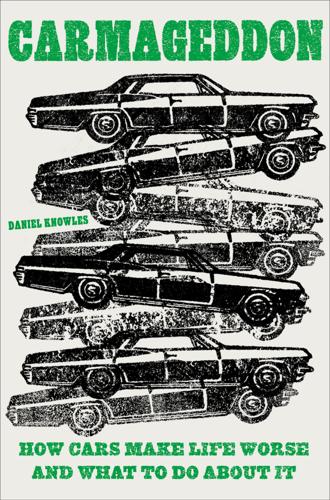
Carmageddon: How Cars Make Life Worse and What to Do About It
by
Daniel Knowles
Published 27 Mar 2023
If you live somewhere like central London or Manhattan, what is happening in Houston may feel, well, thousands of miles away. In those cities car lanes are being taken away from roads to build cycle lanes, and congestion charges are spreading. It is easy to find stories about new urban advancements. The socialist mayor of Paris, Anne Hidalgo, has promised to wage war on the car, scrapping street parking to make space for bike lanes. Amsterdam has been pedestrianizing main roads since the 1970s. But in fact, such stories are interesting because they are rare. In most of the world the car is quietly becoming ever more dominant. According to statistics from the US Department of Energy, between 2004 and 2014, globally the number of vehicles per capita rose in every region of the world except, perhaps surprisingly, America.
…
Nonetheless, he persevered, and in 2013 he succeeded on the opposite side of the Seine, closing a section of the Left Bank permanently to cars. But the closure of the Pompidou was held up, first by François Fillon, the prime minister from 2007 until 2012, and then by the police. It took until 2017 for the road to be closed, not by Mr. Delanoë but by his successor, the socialist Anne Hidalgo. Even then, she almost failed. First she had to persuade the police department, which had the right to reopen the road if it judged that the closure was displacing traffic elsewhere. (After conducting a study, they were persuaded—another example of how roads induce demand.) Then in 2018, a year after it was first shut, a bunch of pro-car activists, who claimed to speak on behalf of France’s forty million drivers, managed to get a court decision ruling that the city had not followed the correct procedure in closing the road.

Circus Maximus: The Economic Gamble Behind Hosting the Olympics and the World Cup
by
Andrew Zimbalist
Published 13 Jan 2015
The grounds cited sound very similar in all four countries: public and politics seemingly fear the high costs of bidding for and hosting the Games, especially in the aftermath of the increase of costs that was witnessed in Sochi as well as concerns relating to human rights and sustainability.8 The mayor of Paris, Anne Hidalgo, reflected an increasingly common perspective when asked whether her city would bid for the 2024 Summer Games: “I love sports. I love competitions. I know what it can bring to a society and a city…. But today we are all under financial and budgetary restraints that do not make it possible for me to say that I support such a candidacy.

Curbing Traffic: The Human Case for Fewer Cars in Our Lives
by
Chris Bruntlett
and
Melissa Bruntlett
Published 28 Jun 2021
Much like the travel patterns of mothers and people with disabilities, many of the journeys taken by seniors include some form of trip-chaining, connecting multiple segments, albeit short ones, at times that are convenient to their daily routine. Facilitating trips such as these is at the core of La Ville du Quart D’Heure (the 15-Minute City), an idea developed by Professor Carlos Moreno of the Sorbonne, and popularized in the mayoral campaign of Anne Hidalgo in Paris. Picked up by the C40 Mayors as a part of the Green and Just recovery plan, La Ville du Quart D’Heure is defined as a city in which all of your daily needs are located within 15 minutes on foot or bike. For the elderly, this is particularly important, as with older age also comes reduced stamina.
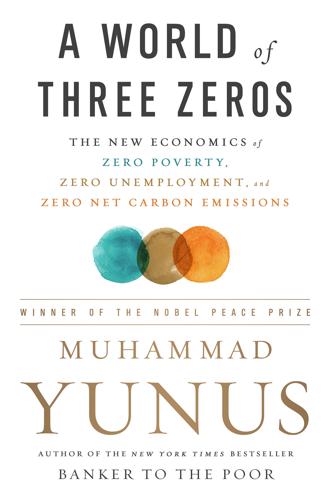
A World of Three Zeros: The New Economics of Zero Poverty, Zero Unemployment, and Zero Carbon Emissions
by
Muhammad Yunus
Published 25 Sep 2017
Think of the pride that the athletes, their fans, and an entire community can share when their favorite team has not only won a league championship but, more important, has helped to bring housing, better schools, or affordable health care to thousands of people in need! I was delighted that my speech before the International Olympic Committee in Rio drew a very positive response from most of the members of the committee. It has also led to some concrete and immediate actions. Right after my speech, Anne Hidalgo, the mayor of Paris, invited me to dinner that evening. During the dinner, she made it very clear that she wants social business to take root in Paris, with sports playing a leading role. Later, I visited Paris to discuss these ideas with her further. Mayor Hildalgo held a press conference at which she dedicated Les Canaux, a historic building in the nineteenth arrondissement of Paris, to serve as Social Business House.
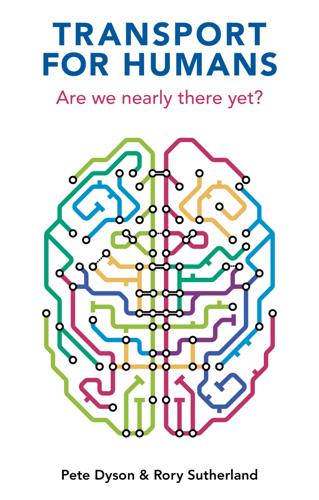
Transport for Humans: Are We Nearly There Yet?
by
Pete Dyson
and
Rory Sutherland
Published 15 Jan 2021
Two centuries earlier, Adam Smith wrote of the ‘man of system’ to describe someone who ‘is apt to be very wise in his own conceit; and is often so enamoured with the supposed beauty of his own ideal plan of government, that he cannot suffer the smallest deviation from any part of it’.24 City design shares common ground with the fundamental objectives of transport design. Both exist to connect people with places, and enable new spaces to be created that people want to live in, work in and go to. Good city design might reduce the need for transport. There is increasing optimism about fifteeen-minute neighbourhoods, with Mayor Anne Hidalgo of Paris knocking five minutes off Adelaide’s 1990s concept of a twenty-minute city – which was itself a reinvention of the USSR’s ‘Microraions’ (microdistricts) and China’s ‘Xiaoqu’.25 The concept of a neighbourhood is increasingly acknowledged as a universally human phenomenon. We think access to transport – the ability to move – should be too.
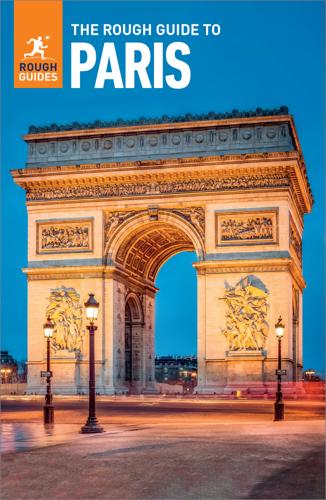
The Rough Guide to Paris
by
Rough Guides
Published 1 May 2023
Victor Baltard’s elegant nineteenth-century iron pavilions were largely destroyed (two were saved – one is in Nogent-sur-Marne, the other in Yokohama, Japan) to make way for the ugly Forum des Halles glass-and-steel shopping mall plus the huge suburban rail and métro station, the biggest in Europe. The working-class quarter, with its night bars and bistrots for market traders, was largely swept away, and the area developed an unsavoury reputation for petty drug dealing. This ‘urban catastrophe’, as Mayor Anne Hidalgo once described it, has been a source of much shame and regret on the part of the Paris authorities ever since; the attempt to retrieve it is a welcome step, but for many Parisians the destruction of Les Halles is an act of self-sabotage that can never be repaired. Forum des Halles Forum des Images Tues–Fri 12.30–9pm, Sat & Sun 2–9pm • http://forumdesimages.fr • http://forumdeshalles.com • MLes Halles/Châtelet/Châtelet/RER Châtelet Les Halles The Forum des Halles is spread over four levels.
…
Whether these plans to erase the boundaries between the rich centre and its poorer suburbs will go far enough to create a more up-to-date metropolis on the lines of New York or London remains to be seen. What is clear is that, with climate change, social unrest and economic disturbances all lapping at the city’s walls, Paris cannot remain an island forever. Madame la maire Born to Spanish migrants and brought up on a housing estate outside Lyon, Socialist Anne Hidalgo was elected as Paris’s first female mayor in 2015. Madame la maire – the feminization of the title provoked the ire of the conservative Académie française – has continued her predecessor Bertrand Delanoë’s policies of making Paris greener and has shown a steely determination to push through controversial policies, for example, the pedestrianisation of a section of the Right Bank of the Seine (see page 102), the closure of the Champs-Élysées to traffic every first Sunday of the month and the pedestrianisation of large squares.

Road to Nowhere: What Silicon Valley Gets Wrong About the Future of Transportation
by
Paris Marx
Published 4 Jul 2022
In September 2016, Paris announced its intention to convert a highway that ran along the Rive Droite (the Right Bank of the Seine) into a pedestrian space. The highway had been closed in the past for limited periods, but this time it was to be permanently pedestrianized as part of Socialist mayor Anne Hidalgo’s strategy to get people out of cars. As in Oslo, there followed a backlash from right-wing and motorist groups to the permanent closure of the highway that carried 43,000 vehicles a day, even as a poll found that 55 percent of Parisians were in favor. The plan went to court as opponents tried to have it overturned, and while they won a legal victory in February 2018, an appeals court ruled in October that the riverbank would remain car-free.
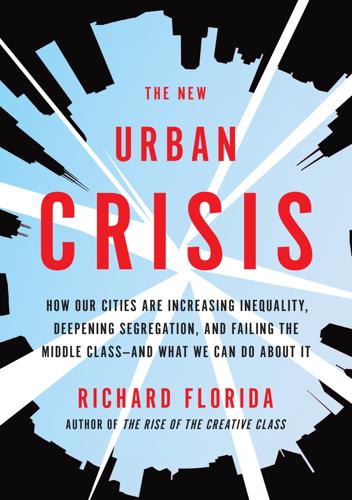
The New Urban Crisis: How Our Cities Are Increasing Inequality, Deepening Segregation, and Failing the Middle Class?and What We Can Do About It
by
Richard Florida
Published 9 May 2016
Before we can turn to specific solutions, however, it’s important to understand the fourth and final dimension of the New Urban Crisis, which is playing out in the mega-cities of the most rapidly urbanizing areas of the globe. 9 THE CRISIS OF GLOBAL URBANIZATION In May 2014, I addressed a summit of the United Nations Economic and Social Council, the Integration Segment on Sustainable Urbanization. Among the people sharing the dais with me were Joan Clos, the former mayor of Barcelona and the head of UN-Habitat, the UN agency that deals with cities and human settlements, and Anne Hidalgo, the mayor of Paris, who had campaigned on a platform that promised to fight the city’s rising inequalities and create more affordable housing. In the gallery were the directors of UN agencies, divisions, and departments that deal with urban affairs and economic and social development, and other leading urbanists.
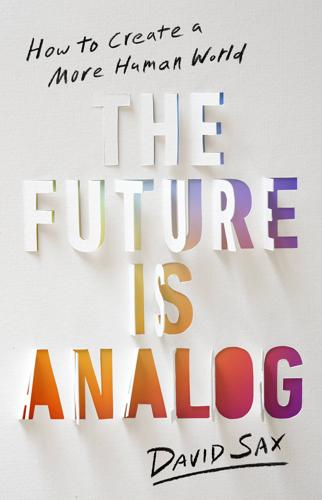
The Future Is Analog: How to Create a More Human World
by
David Sax
Published 15 Jan 2022
Cities like Bogota, São Paulo, Tokyo, Mexico, Heidelberg, Stockholm, Montreal, Sydney, and Tel Aviv have closed streets to cars or restricted traffic to encourage pedestrians and biking. In 2023, Berliners will vote on a referendum to ban cars from the city core. Most recently, the mayor of Paris, Anne Hidalgo, has transformed the city of lights into a “fifteen-minute city,” where everything a Parisian needs—work, school, baguettes—is accessible within a fifteen-minute walk or bike ride. Even the standard-bearers of pedestrian-friendly urban design—Amsterdam and Copenhagen—were car-centric cities until deciding to transform several decades ago.

Streetfight: Handbook for an Urban Revolution
by
Janette Sadik-Khan
Published 8 Mar 2016
Dublin, Ireland, in 2015 announced a €150 million ($164 million) plan to improve downtown streets for people who walk, ride bikes, or take transit. London mayor Boris Johnson has embarked on a bike superhighway building spree through the heart of the city, with expenditures on bike lanes tripling to £913 million ($1.4 billion) over ten years. Paris mayor Anne Hidalgo has led the way with a plan to sharply reduce private vehicles in central Paris by 2020, launching its own €150 million plan to double the city’s network of bike lanes and triple ridership to 15 percent of trips. These efforts follow Seville, Spain, which has rapidly developed into the bike capital of southern Europe, with cycling rates growing eleven times over the last decade and with seventy-five miles of protected bike paths built in the city.

Revolution Française: Emmanuel Macron and the Quest to Reinvent a Nation
by
Sophie Pedder
Published 20 Jun 2018
Ever since he entered public life, he has been the subject of caricature to this end. Jean-Luc Mélenchon, a fiery far-left class warrior who ran for election under the banner of a political movement called Unsubmissive France (La France Insoumise), accused Macron during the presidential campaign of being a ‘grand bourgeois’. Anne Hidalgo, the Socialist mayor of Paris, who preferred her party’s candidate, Benoît Hamon, for the presidency in 2017, described Macron as ‘the incarnation of the social reproduction of the elites’. Yet Macron is not a member of what the French call the haute bourgeoisie. His childhood home is not grand.
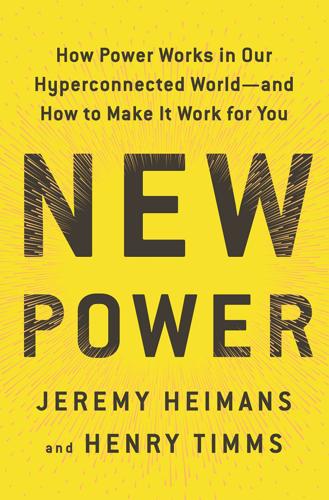
New Power: How Power Works in Our Hyperconnected World--And How to Make It Work for You
by
Jeremy Heimans
and
Henry Timms
Published 2 Apr 2018
Some of this is already happening, especially at the city level. Participatory budgeting is an idea that started decades ago in the Brazilian city of Porto Alegre but is now spreading throughout the world and merging with internet crowdsourcing culture. Paris’s ambitious participatory budgeting program, led by Mayor Anne Hidalgo, has led to hundreds of thousands of Parisians passionately debating and voting on projects close to their daily lives, everything from greening public space to aiding the homeless. This mirrors the success of the citizen engagement and budgeting program in Reykjavik, which has attracted nearly 60 percent of that city’s people.
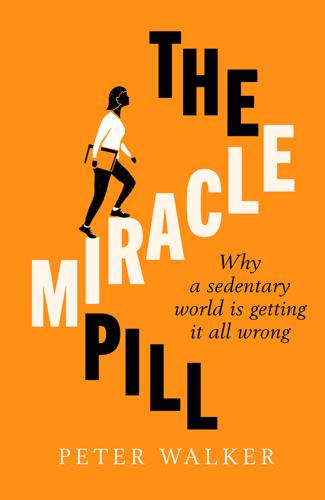
The Miracle Pill
by
Peter Walker
Published 21 Jan 2021
He argues that a combination of the inactivity crisis and the climate emergency should be used as an opportunity to completely reshape cities in favour of walking and cycling, and he would like to see his adopted home, Paris, make itself entirely car-free: ‘When big things happen in societies, it’s rarely one thing that precipitates big change, it’s normally the collision of several things.’26 Levine was being more prescient than he could have realised. We spoke just before the coronavirus emergency descended. At time of writing, to cope with the socially distanced transport aftermath, Paris’s mayor, Anne Hidalgo, has removed cars from a series of city centre roads and announced plans for hundreds of miles of extra cycle lanes. Levine’s dream could be about to happen. Don’t just sit there One of the biggest risks from excessive sitting down is known to be a greater propensity to diabetes, as well as the associated risk of increased waist size.

Ghost Road: Beyond the Driverless Car
by
Anthony M. Townsend
Published 15 Jun 2020
Homeowners’ associations might foot the bill simply as a cost of maintaining law and order on subdivision streets. Business districts might pool funds from property owners to keep streets clear for tenants and improve the marketability of office towers. With the city attorney by my side, I might even make a valiant attempt to impose a curb-access fee on Amazon and its ilk for every stop, as Paris mayor Anne Hidalgo has, using the funds to establish a municipal porter service of my own. Worst case, I’d issue porter-service franchises to small-time vendors and create some much-needed jobs for veterans, public housing residents, or other needy self-starters. I’d make the case that not only was my system better for the people, it was better for industry too.
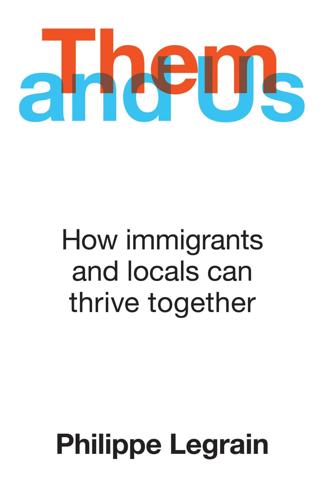
Them and Us: How Immigrants and Locals Can Thrive Together
by
Philippe Legrain
Published 14 Oct 2020
On the Labour side they include former minister Margaret Hodge, an Egyptian-born Jewish refugee, Bangladeshi-born Rushanara Ali and Pakistani-born Yasmin Qureshi, who previously headed the criminal legal session of the UN Mission in Kosovo. Before Brexit, Magid Magid, a refugee from Somalia, was a Green member of the European Parliament. In France, Paris mayor Anne Hidalgo was born in Spain. Far-left presidential candidate Jean-Luc Mélenchon grew up in Morocco to parents of Spanish descent. Former prime minister Édouard Balladur was born in Turkey to Armenian parents; one of his successors, Manuel Valls, was born in Barcelona. Former education minister Najat Vallaud-Belkacem was born in Morocco, former culture minister Fleur Pellerin in South Korea.
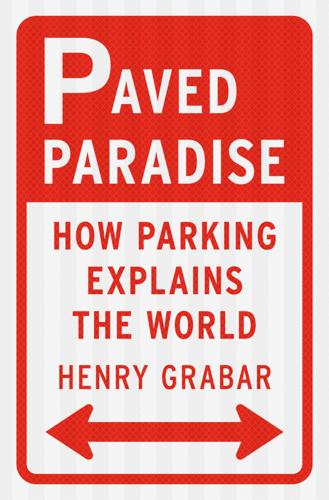
Paved Paradise: How Parking Explains the World
by
Henry Grabar
Published 8 May 2023
Progressive politicians in Oslo, Norway, took power in 2015 with a plan to prohibit cars in the city center, where most residents did not own cars. Shop owners revolted; the city recalculated: it banned parking instead, removing all 650 on-street spaces in the central zone. In their place rose playgrounds, cultural spaces, benches, or bike parking. In Paris, Mayor Anne Hidalgo eliminated thousands of curbside parking spaces to create room for bus lanes, bike lanes, and loading zones, and planned to get rid of half the capital’s curb parking—seventy thousand spaces—by 2025. One winter day in 2020, her deputy mayor for transportation, Christophe Najdovski, welcomed me into his office of the Gothic city hall, overlooking one of the administration’s signature projects: a two-way bike path running down the rue de Rivoli, the city’s great east-west thoroughfare.
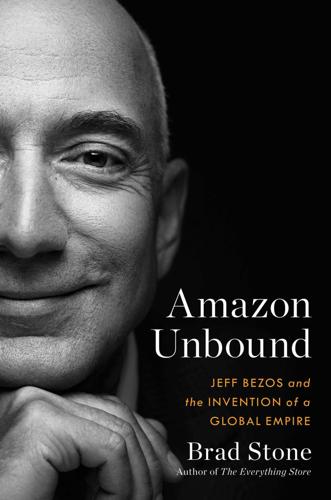
Amazon Unbound: Jeff Bezos and the Invention of a Global Empire
by
Brad Stone
Published 10 May 2021
Amazon’s French operations team calculated that the liabilities could add up to more than a billion dollars. The directive then came from Seattle to shut down the French FCs. The judge’s ruling, along with the specter of massive liabilities, “made it not a hard choice,” said Clark. The French FCs would stay closed for a month and generate plenty of acrimony. Anne Hidalgo, mayor of Paris, called for a boycott of Amazon in favor of local shops while France’s culture minister inveighed, “Amazon is gorging itself. It’s up to us to not feed it.” The battle also took a toll inside the company. The European operations teams had labored for years to establish Amazon as a trusted employer; some executives now felt that insular, centralized decision-making from their colleagues thousands of miles away in Seattle was undermining that work.

The Rough Guide to France (Travel Guide eBook)
by
Rough Guides
Published 1 Aug 2019
Although riotous street protests have been a feature of modern Parisian life – most famously in May 1968, when students burst onto the streets of the Quartier Latin – the traditional barricade-builders have long since been booted into the satellite towns, known as la banlieue, alongside the under-served populations of immigrants and their descendants. Integrating these communities, riven with poverty, unemployment and discontent, has long been one of the greatest challenges facing the city. Meanwhile, the city’s Socialist and first woman mayor, Anne Hidalgo, is continuing and expanding upon the green policies of her popular predecessor, Bertrand Delanoë, creating a more cycle-friendly environment and reclaiming for pedestrians more of the riverbank, as well as the city’s famous squares, place de la Bastille and place de la Nation. In the wake of the horrific events of 2015, when Paris experienced two major terrorist massacres – the Charlie Hebdo shootings in January and the widespread attacks of November – the city experienced a renewed sense of unity and solidarity.